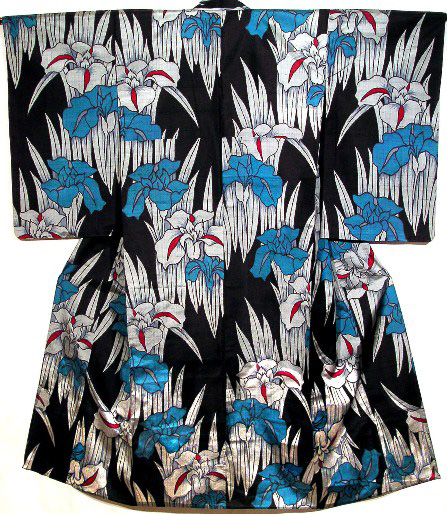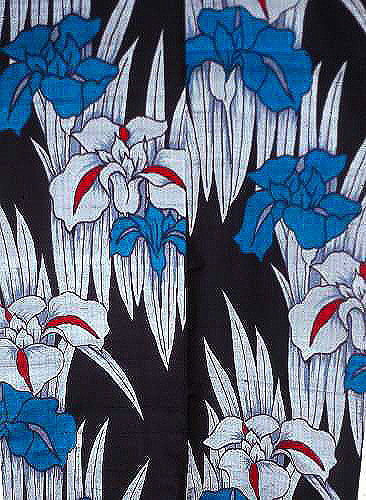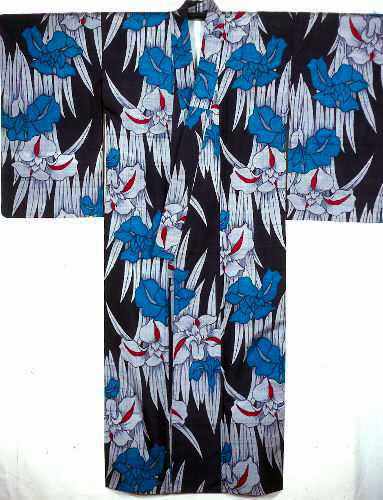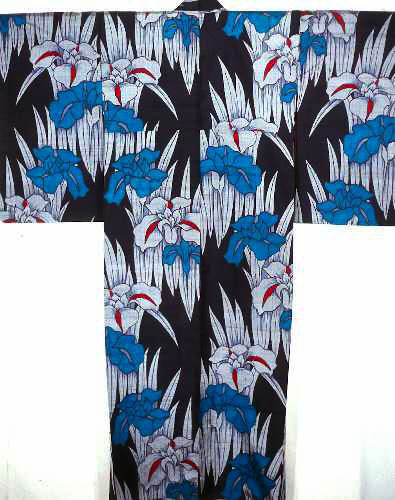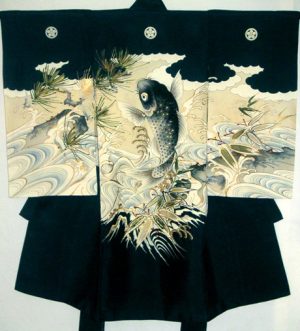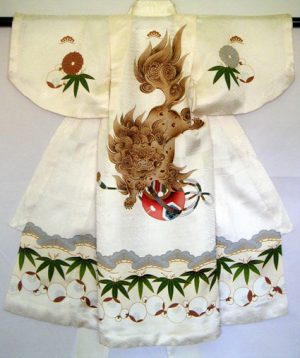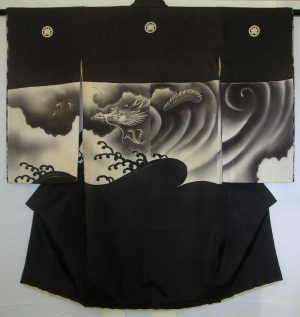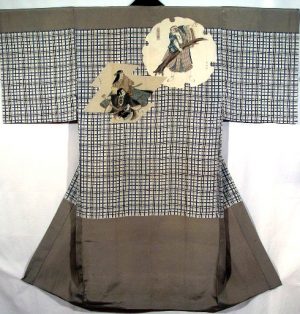Description
The major fashion trend of the late Meiji Era, affecting the design of the Kimono, was a tendency towards brighter colors and more opulent fabrics. This trend became even more apparent as Japanese society became more economically prosperous and culturally expansive during the late 1800s. The new taste for bold Kimono design reflects the general outward-looking attitude of society during the Meiji Era, when the Emperor resumed his throne and opened Japan to foreign trade. The fabulous Kimono that came out of this style (like this stunning black Meisen Silk with bold red and blue Iris), would become known by the name of the following era in Japanese History: Kimono in the Taisho Mode. During this time, the shape of the Kimono remained the same, but the traditional small motifs were dramatically enlarged or distorted to create a dramatic visual statement for the sophisticated urban woman. This bold, painterly-rendered, overall Iris repeat arrangement is clearly presented as a modern graphic pattern, totally different from classic designs of earlier times. It is large, brilliantly dyed Meisen Silk, hand woven into its typical flat hard finish with an unmistakably luxurious sheen. “Meisen,” the exact meaning of the word is unknown, was a favored fabric. It appealed to the adventurous taste of young metropolitan women, while its vibrant designs reflected the changing culture of Japan as it moved into the modern era. Meisen fabric is connected, not so much with the famous Kyoto weavers, but with towns in the Kanto plain surrounding Tokyo. It ceased to be produced in the 1950s
Many varieties of Iris (“Kakitsubata”) were introduced to the West in the mid 1800s from Japan, where they had been a subject of poetry and painting from early times. The Iris blossoms were considered the flowers of purification and were believed to ward off plague and demons. The Iris received its most splendid and famous depiction in the folding screens painted by Ogata Korin in the early 1700s. As a design, the Iris motif followed the familiar course of first appearing as a purely decorative device on the clothing and carriages of the court nobility, and then later being adopted as a family crest in both court and samurai circles.
There are famous Iris Festivals (“Matsuri”) celebrated throughout Japan, the most important of which is Boys Day (on the 5th day of the 5th month). The plant is believed to hold properties of fertility, vigor and the strength to defeat demons. Geisha dancing, singing and photograph contests, and haiku poetry readings are also included in the Iris celebrations in Itako from June 1 through June 25. One of the most beautiful Iris displays is in the Gardens of the Meiji Shrine, which were established by Emperor Meiji, the great grandfather of the current Emperor. Japanese festivals are a compelling mixture of ritual, symbol, costume and color bringing the past into the present and play a notable role in the spiritual, cultural and social life of Japan. Only a young, unmarried woman of very high status and wealth could have worn this stunning Kimono.
A Certificate of Authenticity is included.
TTAC will personally pack and ship via UPS at company expense within the continental U.S.

